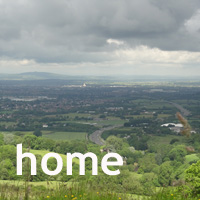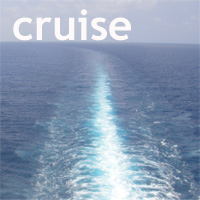putting my money where my mouth is
 Sunday, March 7, 2010 at 9:02AM
Sunday, March 7, 2010 at 9:02AM All too often, I am aware that what you see is not necessarily what you get. As I presented a workshop on Friday about video editing, I realised that I really did need a bit of practice. OK, I have created one or two projects before, have a pretty clear grasp of the pitfalls (it's nearly always the issue of file size) but it's a while since I spent time exploring Windows Movie Maker in any depth and I was conscious that I was only a page or two ahead of the learners on Friday. With a few video clips from Libya there in a folder and a promise to share them with Mohammed and the two drivers, it was time to invest a little time and energy.

I've been using a Flip video camera borrowed from work for quite some time and loved it enough to buy one for myself - a Mino HD. Whilst we were in Libya, I kept it in my pocket and found it really great when my camera battery expired unexpectedly. This wasn't really a place where I'd consider capturing a moving image - these ruins were pretty still! But, by sweeping slowly round, I was able to get a feel for the scale of the place and, best of all, grab some still images from the video file when I got home. I also captured a fair bit of the pavements by leaving it switched on unintentionally, but that's another story ;-)
It was in the Sahara where the Flip came into its own. Though a still photograph can give an impression of the scale of the place (my apologies for using a photo for a second, possibly third time!) it was the Flip which allowed me to create a memory of the experience. Record the fun of it all, so to speak.

I came home and downloaded the clips and fell upon a bit of a stumbling block. My great HD camera captured really fine video, but oh my goodness, the file sizes were enormous. How on earth was I going to manage them? The answer came in the form of software recommended in the class materials - who says teachers are not learning at the same time as their students?! Using Prism Video File converter, which comes as part of the freely available NCH suite of media editing tools, I whittled the files down to a more manageable size and imported them into Windows Movie Maker.
Finding one or two of the gaps where I'd cut out some parts I didn't really want to share (perhaps not surprising what idiot things I say and do when I forget it's being recorded) not to mention all those shots of my feet, I decided to import one or two of the still images alongside.
But then, I decided I wanted music.
Poor Mark endured an afternoon of me trawling through my itunes collection, sampling a hundred (it seemed) websites with free downloads of arabic music, none of which was really what I was looking for. I came across some interesting Tuareg bands and became totally distracted before I reminded myself what I was supposed to be doing.
I added a soundtrack from the default samples included in the program - which seemed to fit pretty well and to prove the theory that the thing I'm looking for is nearly always right there at the end of my nose! At about 11.30 last evening, I was able to upload the finished project to You Tube and email our Libyan friends with a link.
Mission accomplished.
 Gill Thomas
Gill Thomas
In answer to a few questions about the video:
We travelled (Mark, Ed, Mohammed our guide and I) in two 4WD vehicles. I generally sat in the first car with Mohammed, which enabled me to film and take photos of Mark and Edward following us. From time to time, the drivers would get out and walk to the edge of the dune to assess whether they felt comfortable driving down it and, having got down there, if there was a possible way out again. Whilst they did this, we took the chance to jump out and get some sand between our toes! Occasionally, as in the film, they had to run quite a way down the steep dune and, more difficult, climb back up again. Once or twice, they had second thoughts and took a different route but mostly, down we slithered on the soft, dry sand as can be seen in one of the shots.
We saw only one or two other cars during the day in the desert and these were by the lakes. Otherwise, it felt as though we had the whole of the Sahara to ourselves! The landscape in the video is typical - mostly sand dunes with the occasional palm tree and areas of scrubby vegetation as far as the eye can see. The Ubari Lakes are quite out of place and appear from nowhere, small clusters of activity in an otherwise silent place.
 travelling,
travelling,  work
work 










Reader Comments